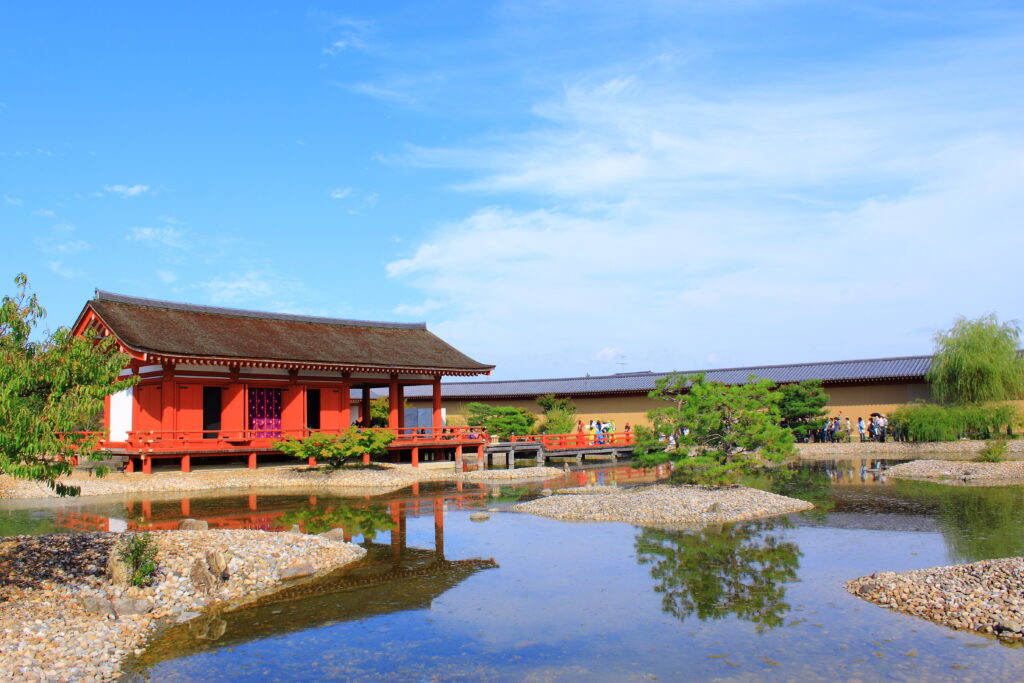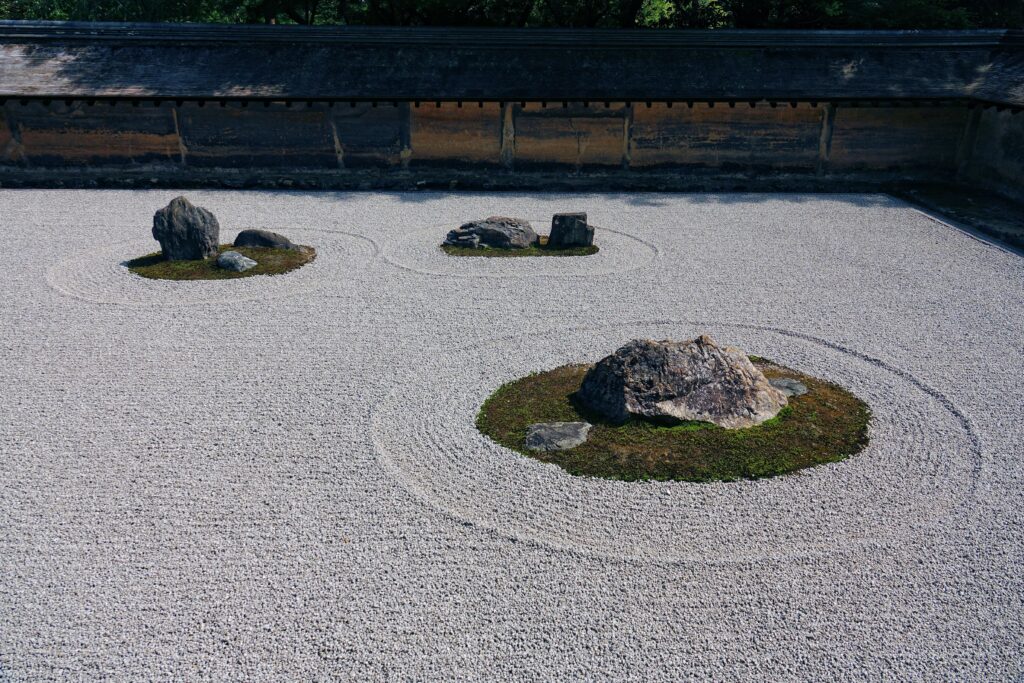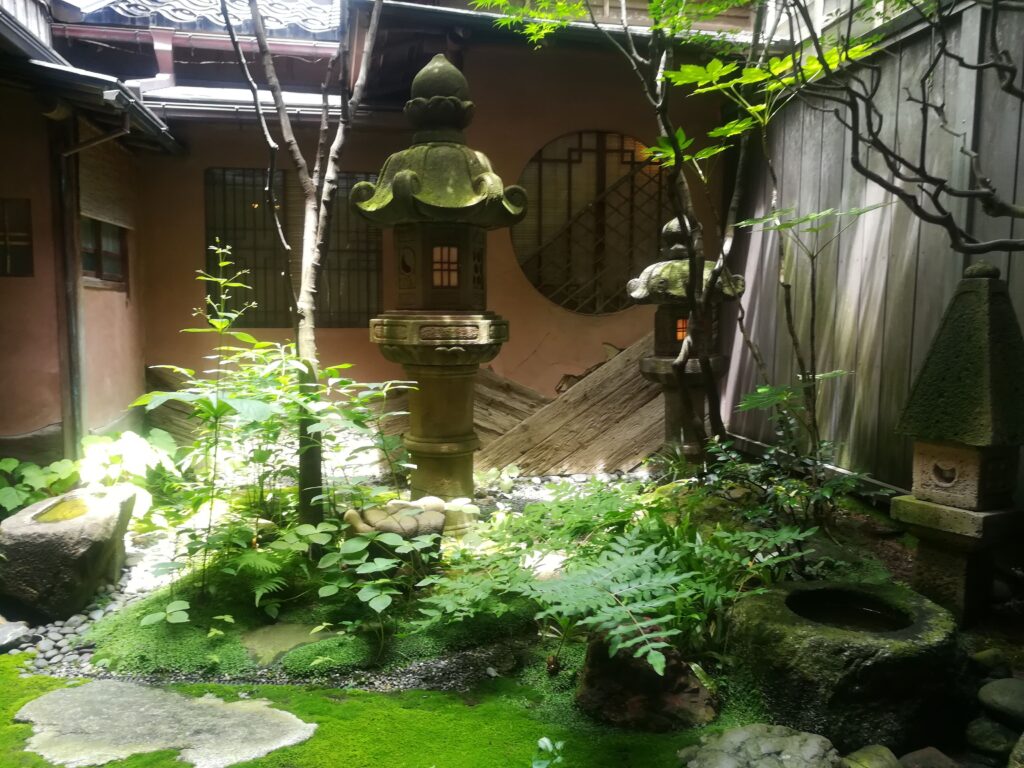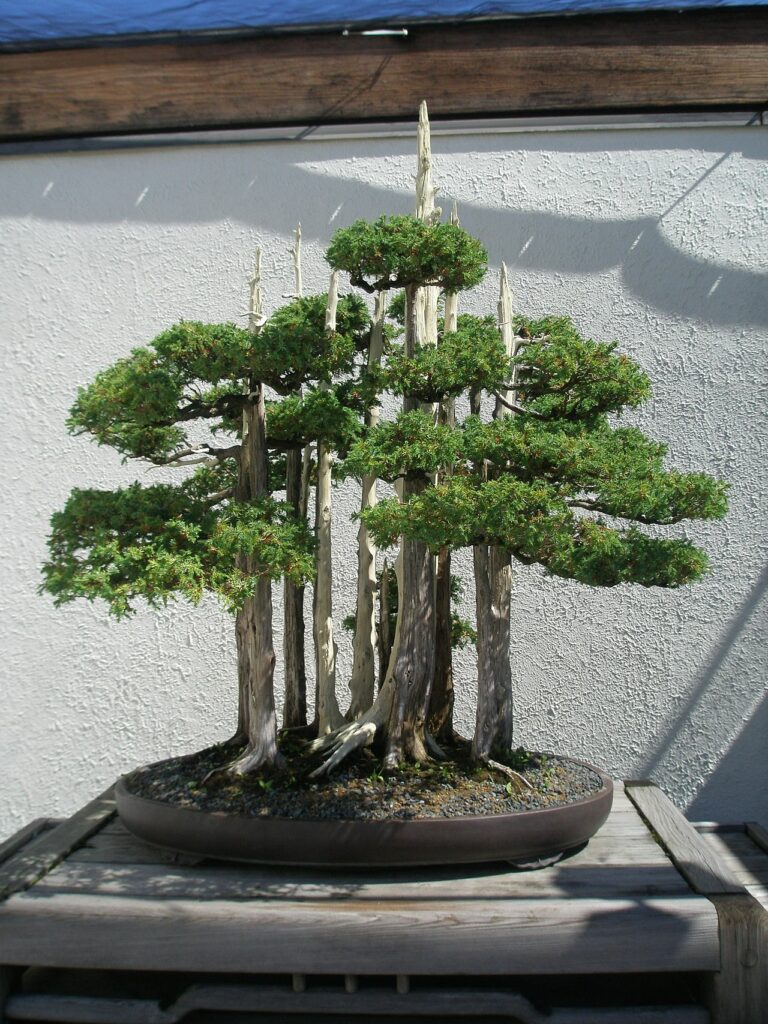I am invested in ideas related to biophilia, our innate love of nature, especially when applied to design.
The research question of this project is how do Japanese gardens support wholistic well-being? I am going to chronologically analyze representations of different ‘types’ of gardens, products of history, philosophy, and spirituality. I will illuminate parts of the history of Japanese gardens to better understand how they came to be and the culture that created them. I will analyze their features through perception and possible experiences (physiological, psychological, and spiritual) to determine how Japanese gardens support well-being so we can apply these ideas to more art and architecture. I would like to acknowledge that spiritual experiences and meanings are unique to the individual. We are all shaped by different circumstances and view everything through distinct perspectives. Although these gardens were created with specific intentions in mind, they can be interpreted and experienced in an infinite number of ways.
Two academic texts primarily shaped my investigation. The first, “14 Patterns of Biophilic Design,” is a guide to biophilic architecture. It lays out 14 different design patterns that strengthen connections between humans and greater Earth. It explains the experiences and roots of patterns from a physiological and psychological perspective. I used these insights in my analyses. The second, “Spirituality and well-being: Theory, science, and the nature connection,” is rich with goodness and expands biophilia spiritually and beyond personal well-being. “The overarching message is that close connection to and participation in the natural world, including through the arts, may vitally nurture sacred, soulful experiences that help us become our best selves and also activate the caring and concern that is needed to protect the planet on which we live” (Ryff 2021).
Nature is a deeply rooted pillar of who the Japanese are as a people. They have always been aware of its power. Shinto, Japan’s ancient and indigenous religion, reflects their connection with nature. Without rules or official scripture, it is more of a way of life that focuses on personal virtues, ancestry, and nature. Shintoists worship millions of Kami (anything with extraordinary qualities or abilities) that exist in or as landscapes, natural phenomena, animals, people, and even those who have passed. Many of Japan’s early gardens were built around these spirits (residing in hills, trees, and stones) so as not to disturb them.
Shinto Shrines
Ancient Shinto shrines can be considered one of the first Japanese garden forms as these sacred spaces within nature were marked by pebbles. This can be seen at some Shinto shrines today in which buildings are surrounded by small stones.
Early Palace Gardens

Creator: Empress Shotoku
Size: 8000 square meters
Date: Originally built during the 8th century, rebuilt in 1998
Location: Heijō Palace in Nara, Japan
Source: https://upload.wikimedia.org/wikipedia/commons/b/bd/Heijyokyo_Tointeien_Plaza.jpg
Credit: RekishiEJ
From the sixth century onwards the widespread adoption of Chinese culture greatly influenced the design of Japanese gardens. At this time gardens were created for recreation and entertainment at imperial palaces. Ponds and streams became focal points, and elements of Buddhism and Taoism were incorporated. No early palace gardens survive, but the East Palace Garden at Heijo Palace was reconstructed in the 1990s based on archaeological findings and provides an idea of what they were like. Used by the imperial family for banquets, pebbles form a pond, streams, and islands. It features a trail and bridges. Visual views of water reduce stress, lower heart rate and blood pressure, and improve concentration and memory restoration. Auditory and tactile access to water also soothes, prompts contemplation, enhances mood, and restores cognitive fatigue.
Shinden Gardens
During the Heian Period (794-1185), aristocrats, devoting much of their time to arts, built shinden gardens at their palaces and villas: large gardens for parties and recreation like boating and fishing. They were designed after Chinese concepts and featured extensive ponds with islands and arched bridges for boats to pass under. A gravel plaza was used for entertainment and pavilions extended over the water. None survive today but their large ponds are found in some later gardens.
Pure Land Gardens
Pure Land Buddhism became popular in the late Heian Period, promising followers a spot in the Pure Land after death. Gardens were built to resemble this Buddhist paradise. They also featured a large pond with islands, pavilions, and lotus flowers. No complete one survives, but a couple of temples preserve many major elements of Pure Land gardens.
Zen Gardens

Creator: Unknown
Size: 248 square meters
Date: About 1500
Location: Ryōan-ji Temple in Kyoto, Japan
Source: https://en.wikipedia.org/wiki/Ry%C5%8Dan-ji#/media/File:Ryoan-ji-Garden-2018.jpg
Credit: Bjørn Christian Tørrissen
Power shifted from the aristocratic court to the military elite at the beginning of the Kamakura Period (1192). These new rulers embraced Zen Buddhism, newly introduced to Japan, which greatly influenced garden design. Zen or dry gardens are designed for sitting meditation and contemplation. Often gardens were built alongside temples to aid monks in meditation and spiritual advancement, like the garden at Ryōanji Temple. Although barren, they still create a natural atmosphere and experience of connection to nature through symbolism. The meticulously raked gravel swirls around the rock groupings, like ocean waves lapping at the edge of islands–or you may see the peaks of mountains emerging from circulating clouds. The gardens are full of movement and change–the figurations of rocks are altered by the changing light during the course of the day and over the seasons. Rain brings out the subtle colors and markings. Sun casts shadows revealing deep crevices and shallow cracks. The simplicity of the design–consisting mostly of muted color and a lot of ma (also known as negative space)–guides you to meditation without forcing you.
Tsuboniwa

Creator: Unknown
Size: Unknown
Date: Unknown
Location: Japan
Source: https://en.wikipedia.org/wiki/File:Tsubo-niwa_-Japan(139).jpg
Credit: Savannah Rivka
Tsuboniwa are miniature gardens within a building. They originated in small spaces between buildings during the Heian period and became common in urban dwellings by the middle of the 16th century. While niwa simply means garden, tsubo has three different meanings. The first is an area equal to two tatami mats, or 3.3 square meters. The second means a vessel, like a large ceramic jug–which refers to its three-dimensionality as a space between the walls of surrounding rooms, with an earthen floor and a lip made of wooden eaves. For the third meaning I must provide some context. There is a belief, in most countries influenced by Chinese culture, in ki or ‘life energy,’ a force that flows through all things. Its movement through the body has been chartered for centuries; along its lines of flow there are special points, something like the pressure points of the nervous system. To invigorate the flow of ki, these points can be manipulated by finger pressure, inserting fine needles, or burning medicinal incense on the skin.…In Japanese, these points are called tsubo. Buildings are like bodies in that life flows through them. The tsubo garden, in its own quiet way, can have a powerful effect on the people who live with it. It is a tiny point of calm and beauty around which swirl the events of daily life; a well-spring of quiet harmony. Because of their small size and immediacy to their caretakers, they are manageable and accessible. Maintaining a garden is a meditative practice because it anchors you in the present moment, heightening awareness and attentiveness. Sweeping, watering, and weeding typically doesn’t take more than 15 minutes a day, but over time you develop a relationship with the garden.
Tea Gardens

Creator: Maeda family
Size: Over 25 acres
Date: 1676-1874
Location: Kanazawa, Japan
Source: https://en.wikipedia.org/wiki/Chashitsu#/media/File:2002_kenrokuen_hanami_0123.jpg
Credit: Chris Spackman
Tea gardens reached the height of their development during the Azuchi-Momoyama Period (1573-1603) when tea masters refined and perfected their design, imbuing them with ‘wabi’ or rustic simplicity. Often tea gardens are incorporated within larger gardens. At Kenroku-en Garden and many others, a path of large stones to the tea house encourages you to walk slowly and maintain concentration with every step. It also creates a sense of anticipation and allows you transition into the space. The tea house is constructed of natural materials, namely wood and straw, and complements its surroundings. The interior is simple, almost bare, but a peaceful environment to participate in the tea ceremony. Rooted in Zen Buddhism this practice is a form of meditation to cultivate presence and enhance awareness. Typically performed in silence, each step of preparing and drinking the tea is done with care and mindfulness.
Stroll Gardens

Creator: Ikoma Takatoshi
Size: 750,000 square meters
Date: 1625-1745
Location: Takamatsu, Japan
Source: https://commons.wikimedia.org/wiki/File:Ritsurin_Garden_20170610-3.jpg
Credit: Suicasmo
During the Edo Period (1603-1867), regional feudal lords created strolling gardens in their home towns and their secondary villas (required to be in Edo, current day Tokyo). They feature ponds, islands, and artificial hills to be enjoyed from the trail (and often elements of tea gardens). While making your way through any stroll garden, recreation involves admiring and contemplating the garden, as well as the greater structure of the universe (and one’s place within it). As nature is always changing, encapsulated views can be enjoyed; the shape, foliage, and bark of trees admired; shapes, colors, and striations of rocks mused over; water lingered beside; and surprises at every turn create wonder and excitement. The soundscape is another important component of this sensory experience–if we were there right now perhaps we’d hear the rustle of leaves, calls from birds, the crunch of gravel under our feet, and our own breath. Being immersed in natural stimuli is grounding, calming but energizing, engaging, and joyful.
Bonsai

Creator: John Y. Naka
Size: 4 feet tall
Date: 1948
Location: National Bonsai & Penjing Museum of the National Arboretum in Washington, DC
Source: https://en.wikipedia.org/wiki/Goshin#/media/File:Goshin,_September_15,_2007.jpg
Credit: Joanna
Japanese people adopted the art of bonsai from China during the Kamakura period. Bonsai disseminated to the West in the late 19th century. Goshin means “protector of the spirit,” and is made of 11 foemina junipers. Each tree represents John Y. Naka’s 11 grandchildren at the time of its making. Cultivating a miniature tree or bonsai has meaningful and healing qualities. A study I read examined the therapeutic effects of bonsai–an endeavor into ecopsychology, which has been referred to as ‘soul work.’ Bonsai enhances emotional awareness: practitioners report reflections of their personality in their work and can deeply connect with a tree, experiencing the loss of a loved one when it dies. It also strengthens spiritual and ecological awareness: respect for nature, harmony with Earth, silence, contentment, and transcendence. Taking care of bonsai can also support physical health through the exercise of moving trees, digging, mixing soil, and potting.
Connections and Conclusions
In terms of Japan-ness, these gardens reflect spiritual and philosophical values of Japan: stillness, harmony with nature, wholistic wellness, ephemerality, and appreciation of the imperfect, mundane, and simple. Although creations of Japanese culture, these gardens hold universal power and beauty.
Japanese gardens offer opportunities to understand yourself, other people, and the world around you, which I have found is the cornerstone of well-being. They point to ways of improving our quality of life (perhaps death as well). Today, tomorrow with increased urbanism, disconnection to and degradation of nature, violence, social inequity, and isolation, natural places like Japanese gardens offer respite, healing, and space for self-actualization and transcendence. By applying their biophilic principles to as much architecture as possible, everyone could receive the benefits of improved bodily health, spiritual awareness, and understanding of Earth.
Bibliography
“Beyond Beauty: The Spiritual Significance of Japanese Gardens.” Japanese Garden Craft, 23 Sept. 2023, japanesegardencraft.com/beyond-beauty-the-spiritual-significance-of-japanese-gardens/.
“Goshin.” Bonsai Empire, www.bonsaiempire.com/blog/goshin.
“History of Bonsai.” Bonsai Empire, www.bonsaiempire.com/origin/bonsai-history.
Hermann, Caroll, and Stephen D Edwards. “Practitioners’ experiences of the influence of Bonsai Art on Health.” International Journal of Environmental Research and Public Health, vol. 18, no. 6, 2021, p. 2894, https://doi.org/10.3390/ijerph18062894.
Keane, Marc P. “Japanese Courtyard Gardens.” Kyoto Journal, 18 May 2020, www.kyotojournal.org/gardens/tsubo-niwa-japanese-courtyard-gardens/.
Ryff, Carol D. “Spirituality and well-being: Theory, science, and the nature connection.” Religions, vol. 12, no. 11, 2021, p. 914, https://doi.org/10.3390/rel12110914.
Thompson, Courtney. “Shinto: All about Japan’s Oldest Religion.” Bokksu, 21 Apr. 2020, www.bokksu.com/blogs/news/what-is-shinto#:~:text=Today%2C%20Shinto%20is%20the%20largest,a%20Shinto%20way%20of%20life.
“Tsubo-Niwa.” Portland Japanese Garden, 7 Jan. 2019, japanesegarden.org/garden-spaces/tsubo-niwa/#:~:text=The%20tsubo%2Dniwa%20is%20a,to%20include%20a%20touch%20of.
“Types of Gardens.” Japanese Gardens, www.japan-guide.com/e/e2099_types.html.
“14 Patterns of Biophilic Design.” Terrapin Home – Terrapin Bright Green, 12 Sept. 2014, www.terrapinbrightgreen.com/reports/14-patterns/.